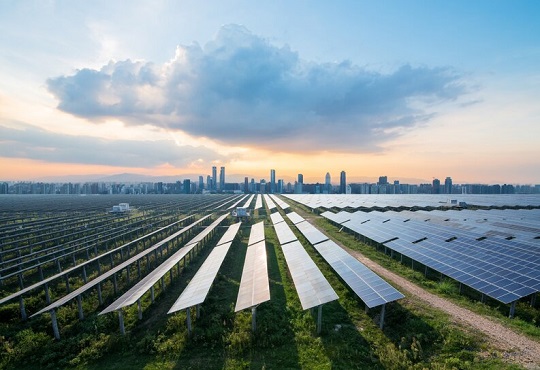IIT Bombay Unveils Solar Storage to Replace Diesel in Himalayas
CIO Tech Outlook Team | Friday, 27 June 2025, 03:24 IST

- IIT Bombay developed a system to store summer solar heat for winter using strontium bromide, offering a clean alternative to diesel heating.
- Each unit stores 500 kWh—enough for four months of heating—and is compact, durable, and cost-effective.
- The technology could benefit remote Himalayan communities and the Indian Army in cold regions.
Researchers at the Indian Institute of Technology Bombay (IIT Bombay) have created a revolutionary new way for storing sunlight obtained in the summer to warm up homes in the winter in the Himalayan region.
This creative new technology utilizes a thermochemical process that uses strontium bromide is a stable, safe, and benign salt to capture solar energy, during the hotter months, so it can be accessed as heat in the freezing winter, thus providing a sustainable option over diesel-based systems.
This energization method operates by taking strontium bromide crystals and dehydrating them using solar-heated air in the summer, during which time there is energy stored in the chemical bonds of the dehydrated salt.
Also Read: Andhra to Launch India's First Quantum Tech Hub in Amaravati
The views in winter with moisture laden air trigger a reverse reaction to allow for the heat stored from chemical bonds to be expressed. The prototype built as part of this research is capable of storing energy to 500 kilowatt-hours and is sufficient for the heating of a small Himalayan home with stored energy for four months.
Every module is compact; approximately the equivalent size of two LPG cylinders; and can be transported from sunny states such as Rajasthan or Gujarat to the north. They can operate for about 500-600 charge cycles with the same efficiency, making it a durable and cost-effective solution. The Levelised Cost of Heating (LCOH) can range from Rs 33 to 51 per kWh, and in Leh Rs 31 per kWh, making it cheaper than diesel, when considering fuel logistics and emissions etc.
This form of technology, with more field tests and along with policy support, could ease the provision of clean, smokeless heating that so far too many remote, energy-poor communities have lacked and possibly also allow the Indian Army to operate down to sub-zero temperatures.




